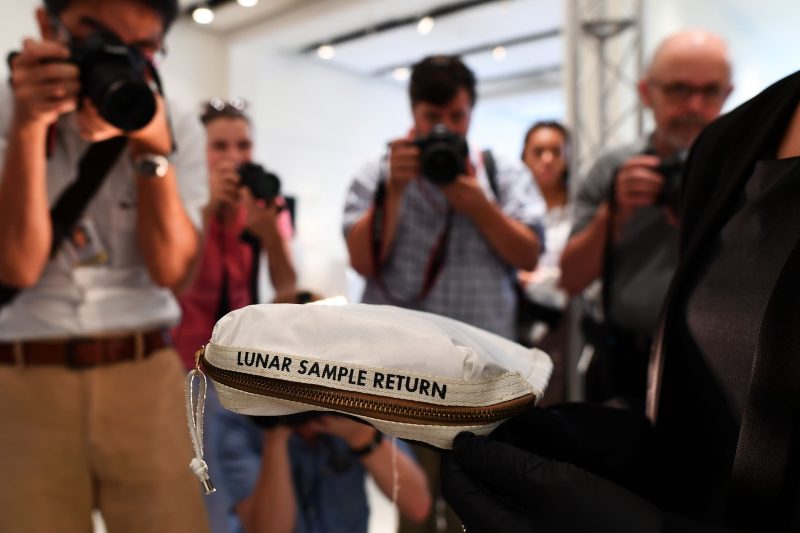In February 2015, Nancy Lee Carlson, an Illinois woman with a fondness for space memorabilia, bid $995 at an auction to become the owner of no ordinary bag. The zipped cloth pouch bore text reading “Lunar Sample Return” and was carried by NASA astronauts.
It wasn’t until later that Carlson learned that her bag had come back from the historic Moon landing mission of 1969. If it sounded too good to be true… it was. Her purchase was genuine, all right. But the item had ended up at a government-hosted auction in Texas by accident, and Carlson had to fight in court for ownership of her own purchase.
In the beginning, it seemed there wasn’t any problem with the transaction. However, when Carlson went on to authenticate with NASA the seemingly random space accessory, the bag became the subject of a legal clash that went on until the end of 2016.
How did it all come to be?
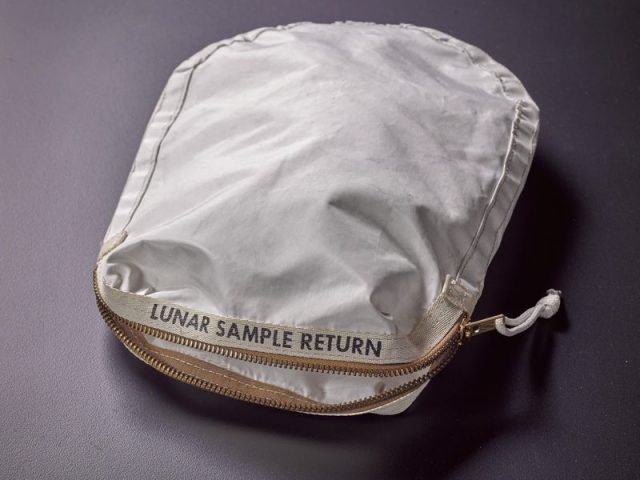
It turned out that the moon bag was among several other artifacts retrieved from the property of Max Ary, a former Hutchinson’s Cosmosphere space museum founder and curator. Back in 2006, Ary himself had faced charges for the theft of space memorabilia from the Kansas-based museum he curated. Some of the items he was convicted for illegally selling were reportedly on loan from NASA, according to Smithsonian magazine.
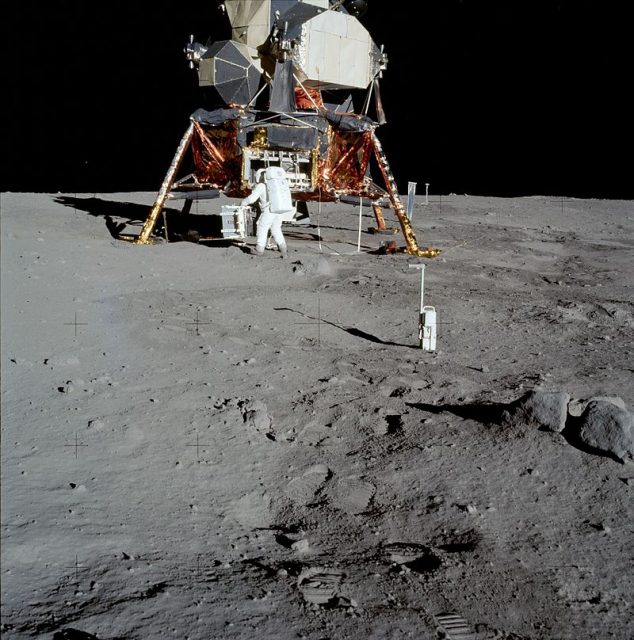
The curator served two years of his 36-month sentence in prison and was ordered to pay $132,374 in restitution. A number of items of space memorabilia were collected from his home, including, it was revealed, the moon bag that Carlson later bought for less than a thousand bucks.
Where the mistake happened was that the Apollo 11 pouch was by error said to be part of Ary’s personal collection. In fact, the pouch had been used to store some of the first collected rocks from the Moon’s surface and it still contained lunar dust.
On the other side of the story, Carlson assumed her purchase had journeyed in space, but she wasn’t sure on which mission, so she submitted the bag for authentication by NASA. A closer inspection at the agency confirmed there were traces of Moon dust on the bag, and they realized a mistake had been made in their inventory lists. As the NASA personnel explained, the Apollo 11 bag was mixed up with another, a similar-looking one, which was used for the last Apollo mission, Apollo 17, which was conducted at the end of 1972. As well an Apollo moon dust bag sold for $1.8 million.
After NASA confirmed this was a relic from the 1969 mission, the situation heated up in 2016 as the agency didn’t seem to have any intention of sending the moon bag back to Carlson. In a statement, agency officials said the bag “belongs to the American people,” according to reports by Associated Press.
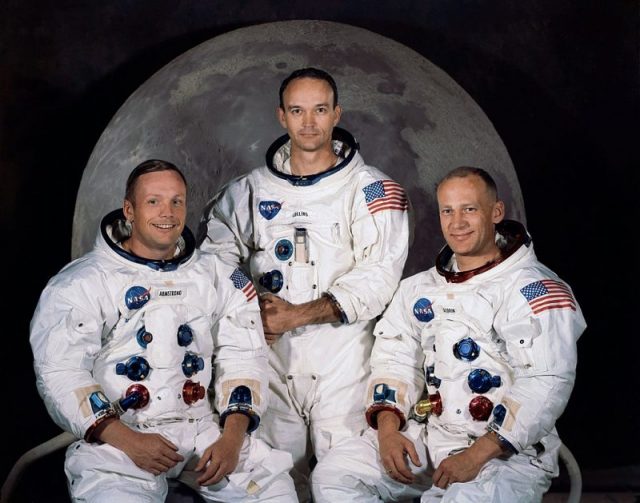
In the following months, the conflict proceeded to court. Interestingly enough, the ruling announced in December 2016 was in favor of Carlson. The attorneys protecting the interests of NASA and the government made an unsuccessful appeal to the court saying the bag was an item that amounted to being a “rare artifact, if not a national treasure.”
Judge J. Thomas Marten, who presided over the hearings which took place in the U.S. court in Kansas, clarified that the moon bag wasn’t supposed to appear for public sale in the first place. However, the transaction that took place was all in alignment with the law. As Space.com reported at the time, this decision meant that Carlson remained entitled to the historical artifact as a “good faith purchaser, in a sale conducted according to law.”
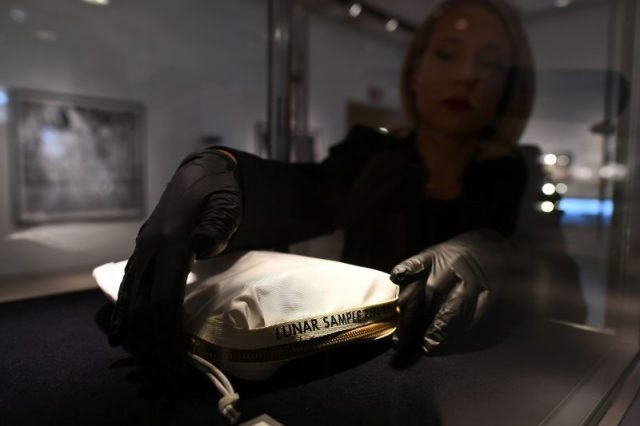
For a short while, the vintage zippered space pouch that once traveled to the Moon remained in the hands of an ordinary citizen after it was by error sold by the U.S. government at auction. Carlson, however, did not quite feel that the bag was safe and sound at her house and she eventually decided to auction it, which happened in July 2017. Not everyone supported her decision, with some lamenting that the item which was supposed to be made available to the public would stored in a private museum.
Nevertheless, the bag was handled by Sotheby’s, who hosted a special space-themed auction on July 20th, 2018, falling on the 48th anniversary of the Apollo 11 lunar landing. The zippered pouch still containing traces of moon dust, and, as you might guess, was one of the auction’s trophies. It reportedly fetched $1.8 million. While Carlson must have been excited by the news, reactions at NASA can be imagined. An artifact which they lost to a private collector, and then in a legal battle, now fetched millions at a new auction.
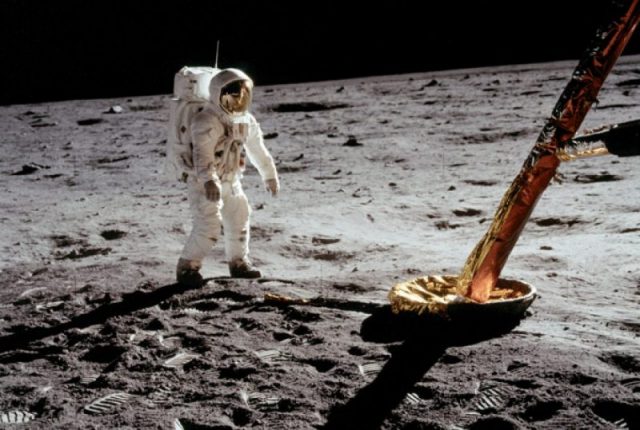
Sotheby’s didn’t reveal any personal details about the new buyer. Other statements from the auction house suggested that Carlson planned to donate a portion of her newly-gained fortune to fund medical research and also initiate a scholarship fund at her alma mater, according to National Public Radio.
Before Carlson became the lucky bidder of the Apollo 11 bag, the bag was first offered at an auction as early as 2014 when it was retrieved from Ary’s home. It was first offered for a sum of $20,000, but nobody seemed particularly excited at that point.
The bag’s price, once its association with the 1969 Moon landing mission was confirmed, skyrocketed.
